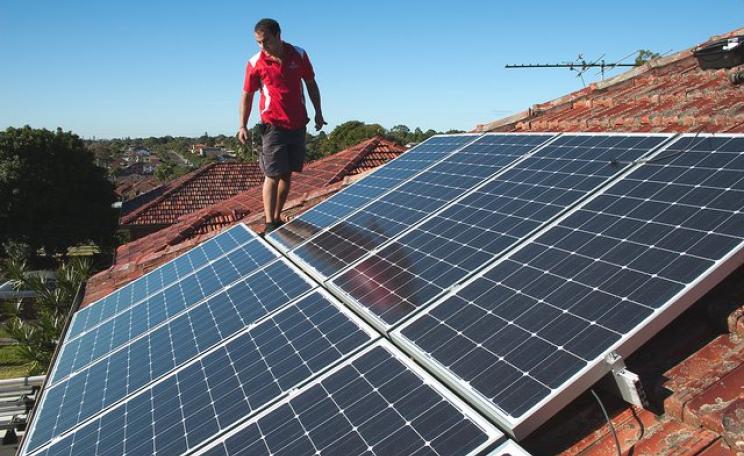Structural changes in energy markets, more efficient electric cars, batteries and hybrid solutions no longer favour oil. The European Union, for example, is already reducing its demand by 1.5% a year.
Investors in fossil fuels are being warned that they may risk losing their money, because the markets for coal and liquefied natural gas are disappearing.
In both cases it is competition from renewables - principally wind and solar power - that is being blamed for the threat.
The cost of electricity from renewables continues to fall in Europe and Asia as the number of wind and solar installations grows in both continents, cutting demand for imported gas and coal.
Two separate reports on coal and gas were published at the same time as a round of annual financial reports from oil companies showed that this third fossil fuel could be in serious trouble too.
Despite massive cutbacks on exploration and development, companies like Shell and BP still need a price of US$60 a barrel by the end of this year if they are to break even on many of their current projects - almost double the current market price.
The news comes just as the UK government reveals its plans to ban local authorities and other public sector bodies from divesting their pensions funds and investment portfolios from fossil fuels - on pain of "severe penalties". The paradoxical move could condemn public sector pensioners to an impoverished retirement.
Australian and US coal most vulnerable as export markets fall away
Overproduction of coal, gas and oil spells trouble for investors in mines, pipelines, ports and the other infrastructure needed to transport fossil fuels round the globe. The cost of development requires a long lifetime for the equipment and a high long-term guaranteed price for the fuels if investors are to get their money back.
The first report, 'Stranded Assets and Thermal Coal', found that Australian and US coal assets were the most vulnerable. Australian mines were particularly at risk because of their heavy reliance on exporting coal to markets that were rapidly shrinking.
Australia exports three times as much coal as it consumes locally, but two of the world's largest markets for coal, India and China, are cutting imports. India's imports fell by 34% last year and China's by 31%. Australia's mines were also seen as high-risk because of environmental regulations and the widespread opposition to their development.
US coal assets were risky because of competition from cheap gas for the same markets. This meant exporting coal and competing in a world market where there is already a significant surplus. The report said company statements made it clear that investors were not being given the full picture of the risks from environmental regulation and policy.
Structural changes in energy markets, more efficient electric cars, batteries and hybrid solutions no longer favour oil. The European Union, for example, is already reducing its demand by 1.5% a year.
Many countries pledged in the Paris Agreement reached last December to cut their coal use. If these pledges were kept, the report said, then much of the coal currently shown as an asset would have to be left in the ground.
Will fossil fuel markets recover? Don't bet on it
A separate report, on liquefied petroleum gas (LPG), also raises the possibility that investors may lose their money. The trade is based on the fact that gas is cheap in the US and expensive in Europe, so the expense of liquefying it and transporting it to Europe is offset. Large investments are being made in the pipelines, ships and ports required to transport it.
There are two problems outlined in the report, 'LNG and Renewable Power'. The first is that the price of gas, which is tied to that of oil, has dropped in Europe, squeezing the margins of the companies that are spending large sums setting up the supply line.
The second is that the market for gas is itself shrinking as the output of the solar panels and wind farms increases. Unless gas investors can see a long-term return from a stable market they will not make a profit, and LPG becomes high-risk.
Predictions on the future of fossil fuel investments all hinge on the price of oil. With big oil companies - and many countries - needing the current price to double to more than $60 a barrel to break even on their current investments.
Almost everybody in the business believes it is only a matter of time before prices double, treble or quadruple back to their former highs. But there are some notable exceptions. For example, the CEO of Vitol's CEO last week told Bloomberg that the current run of low prices is likely to persist for a decade.
And Paul Spedding, former global co-head of oil and gas research at HSBC, an adviser to Carbon Tracker, believes the price of oil may never recover. Structural changes in energy markets, more efficient electric cars, batteries and hybrid solutions no longer favour oil, he says. The European Union, for example, is already reducing its demand by 1.5% a year.
Similar drops can be expected elsewhere as governments strive to meet their targets under the Paris Agreement. If that happens, an oil surplus will become the 'new normal' and investors in fossil fuel producers will face a difficult future.
Paul Brown, a founding editor of Climate News Network, is a former environment correspondent of The Guardian newspaper, and still writes columns for the paper.
This article was originally published by Climate News Network.







